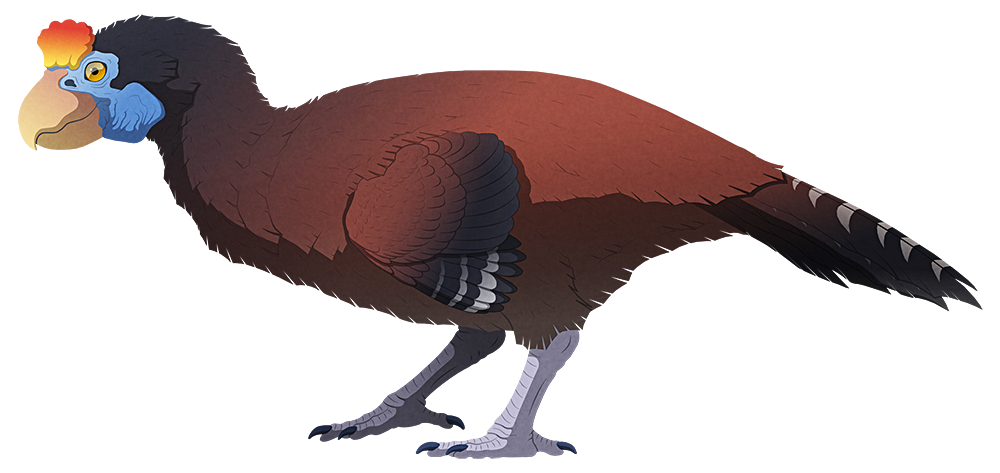Between Australia and Fiji lie the islands of New Caledonia, an archipelago at the northern end of the mostly-submerged continent of Zealandia. Having split away from Australia at the end of the Cretaceous, 66 million years ago, New Caledonia’s Cenozoic isolation has resulted in the islands acting as a refugium for a number of “living fossil” lineages, including the kagu, a small nautilius, and the “primitive” flowering plant Amborella.
One of the strangest residents of these islands was Sylviornis neocaledoniae, a huge flightless bird standing around 0.75m tall (2’6″) and measuring about 1.7m long (5’7″). Initially mistaken for a ratite, it was later found to be a cousin of the galliforms, the group that contains modern chickens, turkeys, pheasants, quail, megapodes, and curassows.
Sylviornis had a massive skull with a large deep beak, topped with a bony crest, along with reduced wings and stout legs. It also had no wishbone, extra tail vertebrae, and a ribcage and pelvis that looked more like a non-avian dinosaur.
It was probably a slow-moving herbivore, browsing on plant matter and digging up roots and tubers with its beak and feet.
Thousands of subfossil remains of Sylviornis individuals have been found, but a large proportion of them are all juveniles, suggesting that this species’ reproductive strategy was to have large numbers of young at a time. It also seems to have had a surprisingly short lifespan for its size — just 5-7 years.

New Caledonia was first settled by humans around 1500 BCE, and it’s likely that Sylviornis was hunted by both them and the invasive mammals they brought along like dogs, pigs, and rats.
The folklore of the Kanak people features stories of a large flightless bird known as the du, described as being reddish-colored with a star-shaped crest, so it’s possible Sylviornis actually persisted alongside the new arrivals for some time — but eventually the environmental disruption was too much for these odd primitive dino-chickens, and they were gone.

